dentro de lo norrmalm
2019/06/23

Estoy capturando el material que grabé con la videocámara cuando estuve flâneuseando por el barrio Norrmalm, de norte que se pierde, pero se encuentra con gafas de bucear graduadas y un Snorri para respirar el origen del mundo de cosas: «Al principio no había ni arena, ni mar, ni olas saladas, ni tierra por abajo ni cielo por arriba; el abismo no tenía fondo y la hierba no crecía en ninguna parte. El Ginnungagap original se extendía entre el país de los hielos, de las tinieblas y de las nieblas, al Norte, y en el Sur, el país de fuego. Del choque y mezcla entre estas materias (una caliente y una fría) nacieron el mar, la tierra y las aguas. Doce ríos venidos del sur fluyeron hacia el país de los hielos, allí se cubrían de escarcha y morían en las inmensidades heladas. Las gotas de agua, vivificadas por el aire del Sur, se reunieron para formar un cuerpo vivo, el del primer gigante, Ymir».
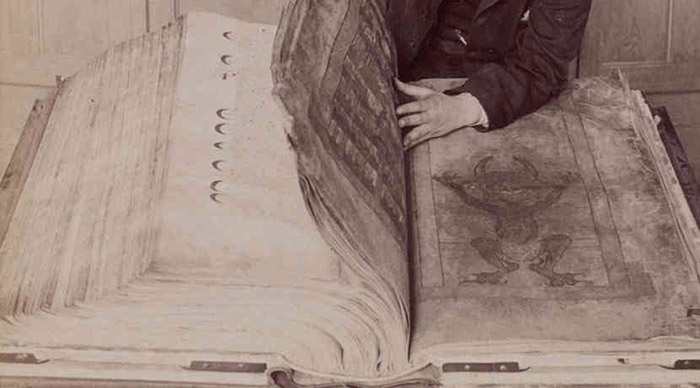
A las 12:44 a.m. @MythologyBot escribe: «G303.22.9 / El diablo aparece / y trabaja / con hombre / que sigue / trabajando pasada la noche». El Codex Gigas —también conocido como la Biblia del Diablo o el Libro negro— es el manuscrito medieval más grande conservado, que actualmente se aloja en una vitrina iluminada y a temperatura constante en una sala de la Kungliga Biblioteket de Estocolmo. Cuenta la leyenda que esta biblia fue escrita e ilustrada por un monje condenado a muerte que, tras pactar con Lucifer, fue capaz de terminarla en 24 horas. El diablo aparece en una imagen a página completa como regalo del monje, o como sello del autor, entre textos bíblicos, curas medicinales y rituales mágicos. Gustaf Edvard Klemming, el bisabuelo de mi abuela, se encargó personalmente de trasladar en un trineo los 75 kg de códice desde el Palacio Real a la Biblioteca Nacional de Suecia, de la que fue director de 1878 a 1890. {Nada más entrar por la puerta principal, reconozco el busto de este familiar con el que no he coincidido en ninguna cena navideña por falta de conexión espacio temporal; luciendo melena y barba bífida, me mira petrificado desde el otro lado del mostrador}

A las 6:44 p.m. @MythologyBot escribe: «A566.2 / Héroe de la cultura asciende / al cielo guiado / por antepasada ciega». Una sobrina del bibliotecario, Helena Klemming, se casó con el pintor Richard Bergh. En más de una ocasión posó como modelo para sus esbozos y cuadros, como «Flickan och döden» (1888) donde la retrató caminando con La Parca detrás; Helena murió de tuberculosis al año siguiente, y esta obra pasó a formar parte de la colección del Príncipe Eugen, también pintor y mecenas, que a su vez aparece retratado en «Nordisk sommarkväll» (1899-1900) junto a la cantante Karin Pyk una tarde de verano en la isla de Lidingö. Bergh, Influido por el simbolismo y la idea de que «el velo de las apariencias esconde otra realidad», inició el camino del romanticismo nacional sueco y fue nombrado director del Museo Nacional de Estocolmo. {Mi camino por el puente de Skeppsholm me lleva a ver miope a lo lejos el Nationalmuseum cubierto con un edredón de fantasma nórdico… cerrado por obras}
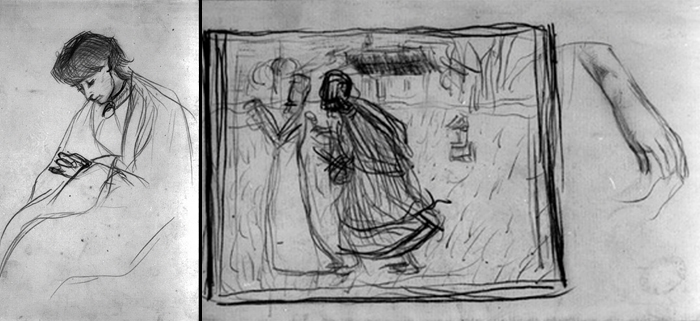

A las 9:44 p.m. @MythologyBot escribe: «F403.2.1.1 / Espíritu familiar adquirido / al llevar huevo / bajo axila izquierda». En el libro de la familia —Släkten Klemmings Historia— hay un capítulo dedicado a la cantante soprano Anna Klemming, que debutó en la Opera Real de Estocolmo interpretando a Matilda en Guillermo Tell. A partir de ahí comenzó a trabajar arrebatadamente en la Kungliga Operan, hasta que enfermó y murió con sólo 25 años. {Al salir a Strömgatan, giro por Drottninggatan hasta el número 88 que, tumbado, es doblemente infinito} El hermano de Anna, Wilhelm Klemming, fue el arquitecto de Centralbadet, unos baños Jugendstil que diseñó entre los años 1902 y 1904; hoy el edificio es patrimonio cultural y en él se utilizó, por primera vez en Estocolmo, el sistema Hennebique de construcción con hormigón armado. {Salgo con la cámara encendida dentro del bolso, grabando medio jersey medio dormida}
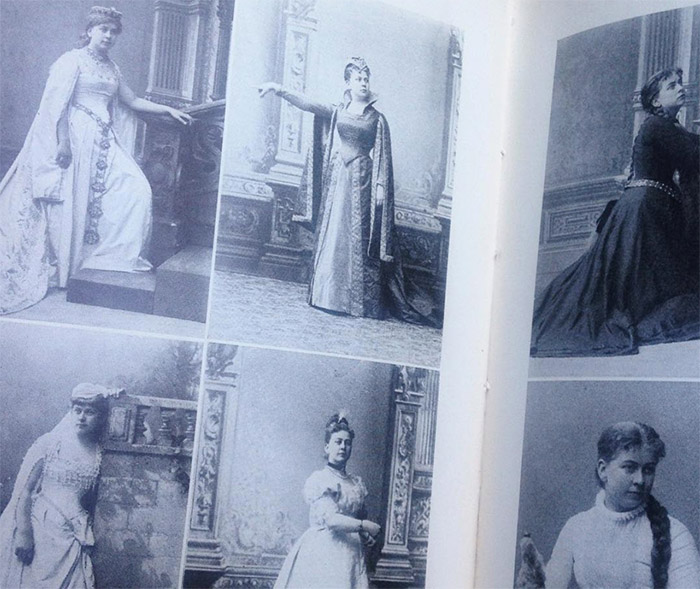
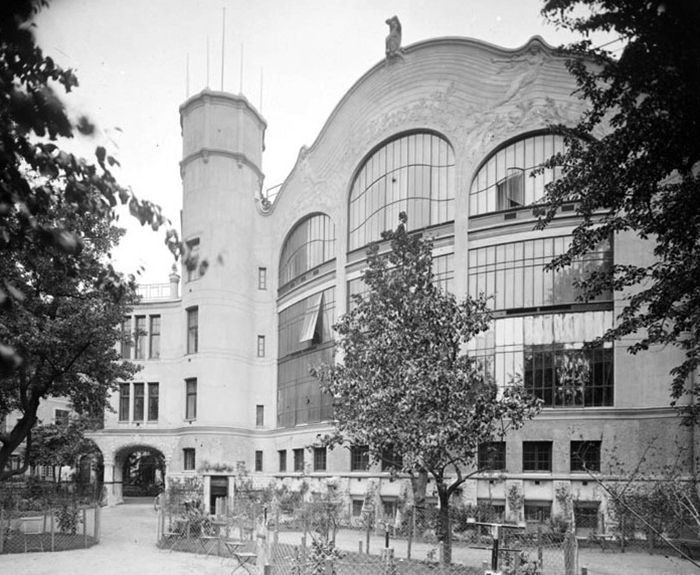
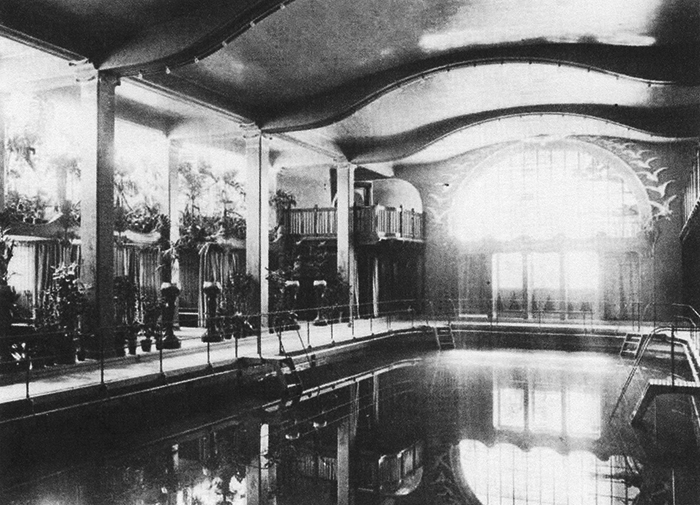
¶
within the norrmalm. ≋ I’m transferring all the clips I recorded with my video camera when I went flâneuse-ing around the Norrmalm area, where the North focus is lost, but found with prescription diving goggles and a Snorri to breathe the origin of the world of things: «At the beginning there was no sand, no sea, no salty waves, no earth below nor sky above; the abyss was bottomless and no grass grew anywhere. The original Ginnungagap stretched on the North between the land of ice, darkness and mist, and on the South, the land of fire. From the clash and blend of those matters (one hot, the other cold), sea, earth and water were born. Twelve rivers that flowed northwards to the land of ice were covered in frost and died on the icy vastness. Animated by the southern air, the water drops gathered to form a living body of the first giant, Ymir». ≋ At 12:44 a.m. @MythologyBot writes: «G303.22.9 / Devil comes / and works / with man / who continues / to work after night». The Codex Gigas —also known as The Devil’s Bible or The Black Book— is the World’s largest preserved medieval manuscript, now displayed in the National Library’s Treasury Room in Stockholm. A legend relates that a lone scribe wrote the entire book in 24 hours, after asking the fallen dark angel for help in exchange for his soul. As a treat from the scribe, or just the author’s signature, the Devil has a full page illustration among biblical texts, medical writings and magic rituals. Gustaf Edvard Klemming, my grandmother’s great-grandfather, carried the 75 kilograms of codex on a sled from the Royal Palace to the Kungliga Biblioteket, were he worked as chief librarian from 1878 to 1890. {Walking through the main entrance I recognize the bust of this relative with whom I haven’t shared any Christmas dinner, because of a lack of space-time connection; with long hair and a forked beard, he gives me a petrified look from the other side of the counter} ≋ At 6:44 p.m. @MythologyBot writes: «A566.2 / Culture hero ascends / to heaven guided / by blind ancestress». The librarian’s niece, Helena Klemming, married painter Richard Bergh. She frequently modeled for his sketches and paintings, as «Flickan och döden» (1888) where she was portrayed with the Grim Reaper following her; Helena died of tuberculosis the next year, and this painting became part of Prince Eugen’s art collection, who was portrayed in one of Bergh’s most famous paintings — «Nordisk sommarkväll» (1899-1900)— with singer Karin Pyk, one summer evening in Lidingö. The artist was influenced by Symbolism and the idea that «the veil of appearances hid another reality», following the path of National Romanticism he became the director of the Swedish National Museum. {Following my path across Skeppsholm Bridge, I dimly spot the Nationalmuseum covered with a nordic ghostlike duvet… closed due to renovation} ≋ At 9:44 p.m. @MythologyBot writes: «F403.2.1.1 / Familiar spirit acquired / by carrying egg / under left arm-pit». The family book—Släkten Klemmings Historia— has a chapter focused on the soprano singer Anna Klemming, that made her debut at the Royal Opera in Stockholm as Vilhelm Tell’s Mathilda. Soon after, she continued to work exhaustingly at the Kungliga Operan, until she fell ill and died at the age of 25. {Taking Strömgatan, I turn right along Drottninggatan way up to number 88, that is a double infinite when falling down}. Anna’s brother, Wilhelm Klemming, was the architect of Centralbadet; Jugendstil baths designed between 1902 and 1904, using reinforced concrete as the Hennebique system for the first time in Stockholm. Nowadays it is considered a cultural heritage place. {I leave with the camera in the bag —power on— recording half of my sweater, half asleep}
♯minbokomtiden ♯klemming ♯codexgigas ♯bergh ♯operasångerska ♯centralbadet ♯artenorrmalm


